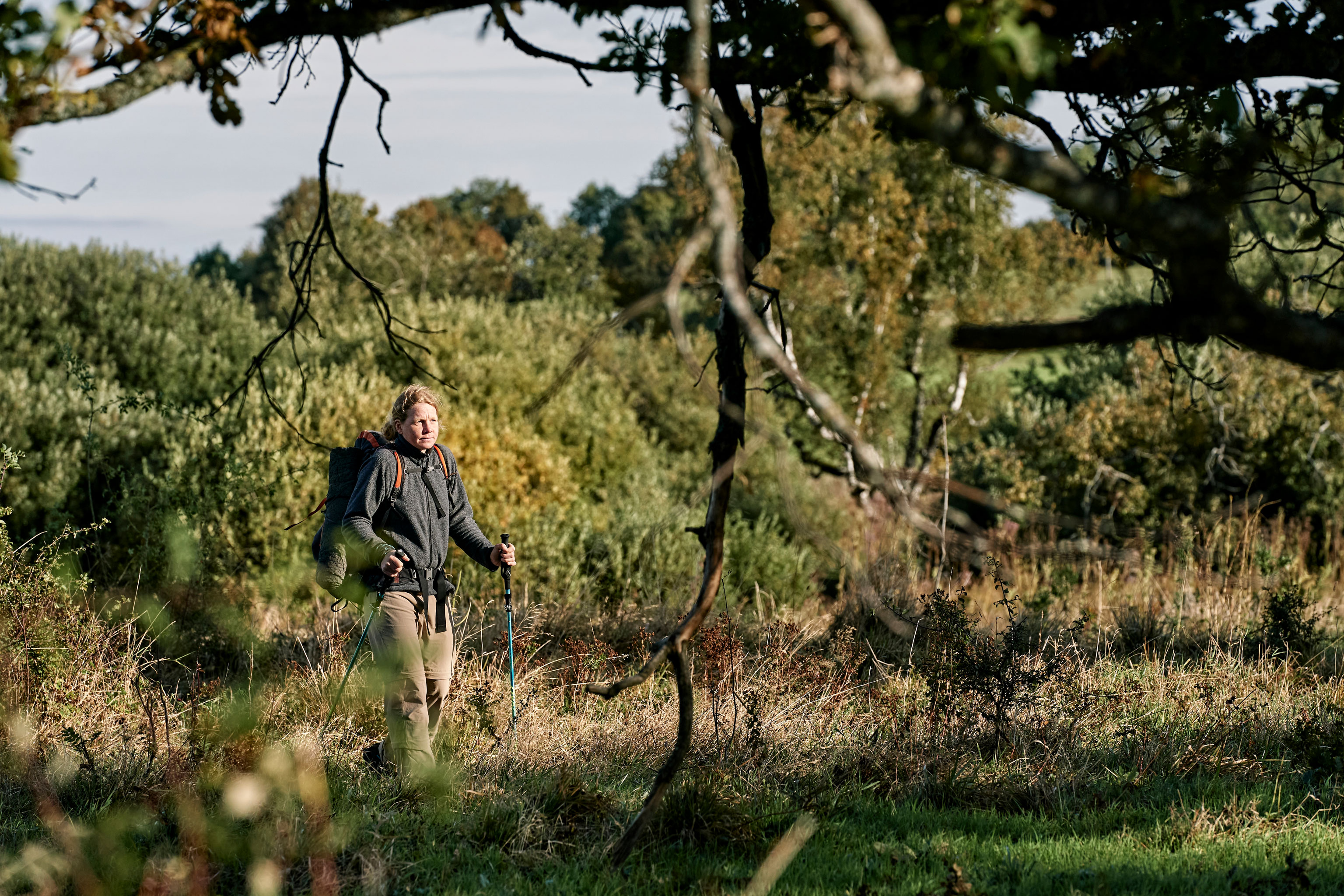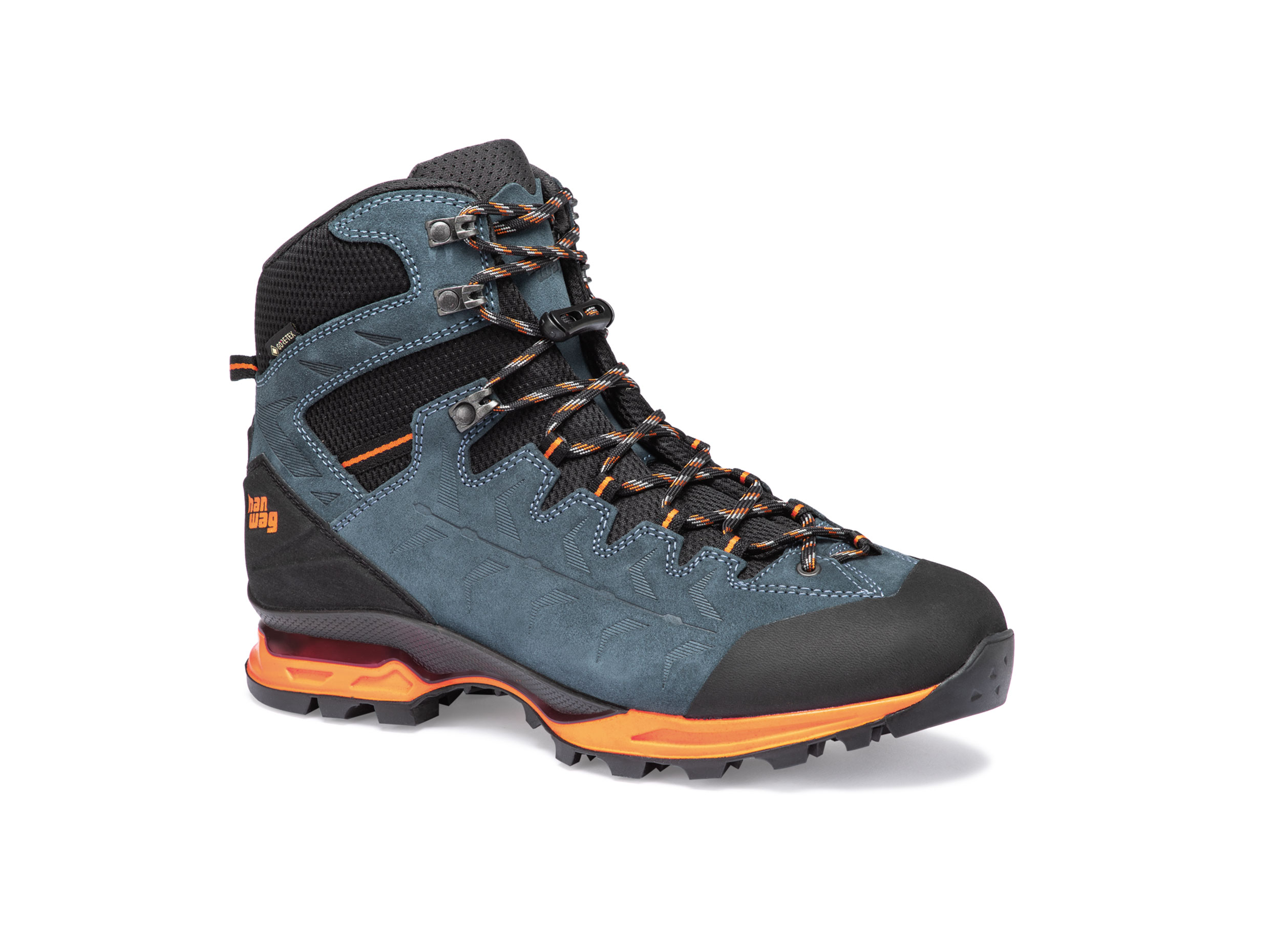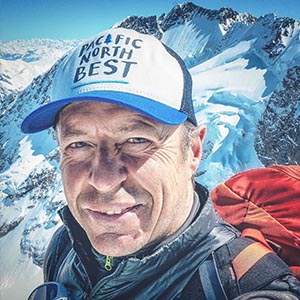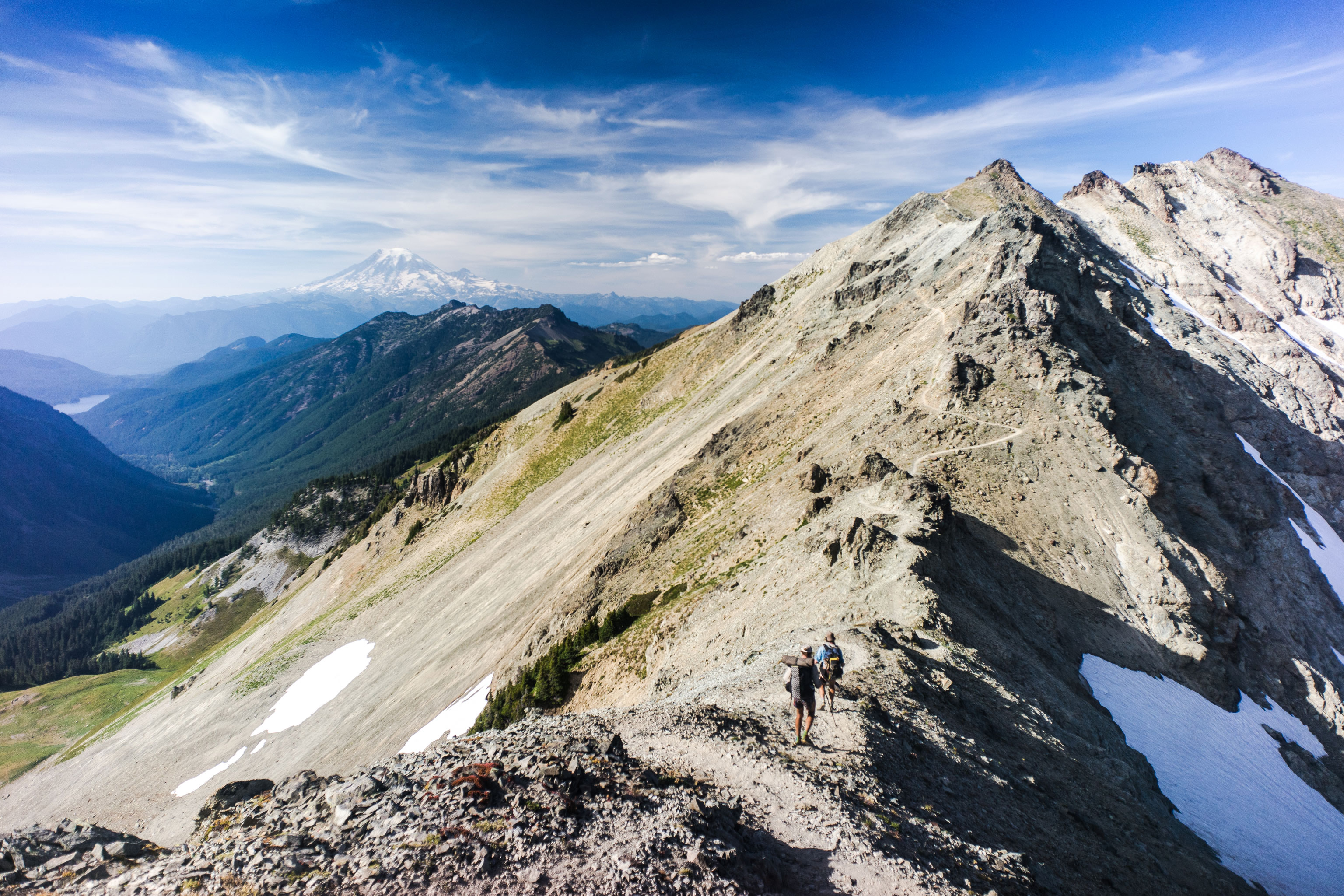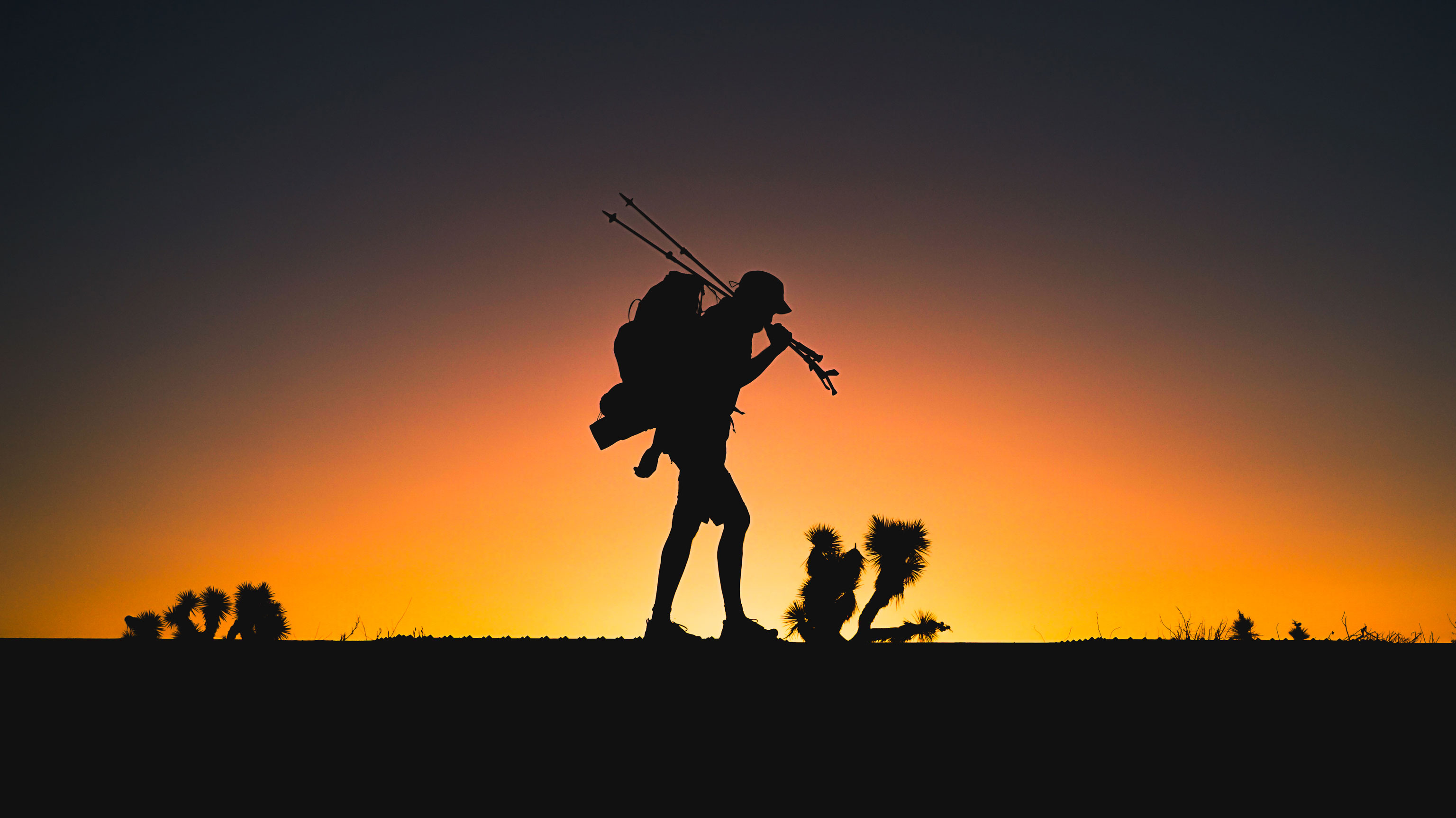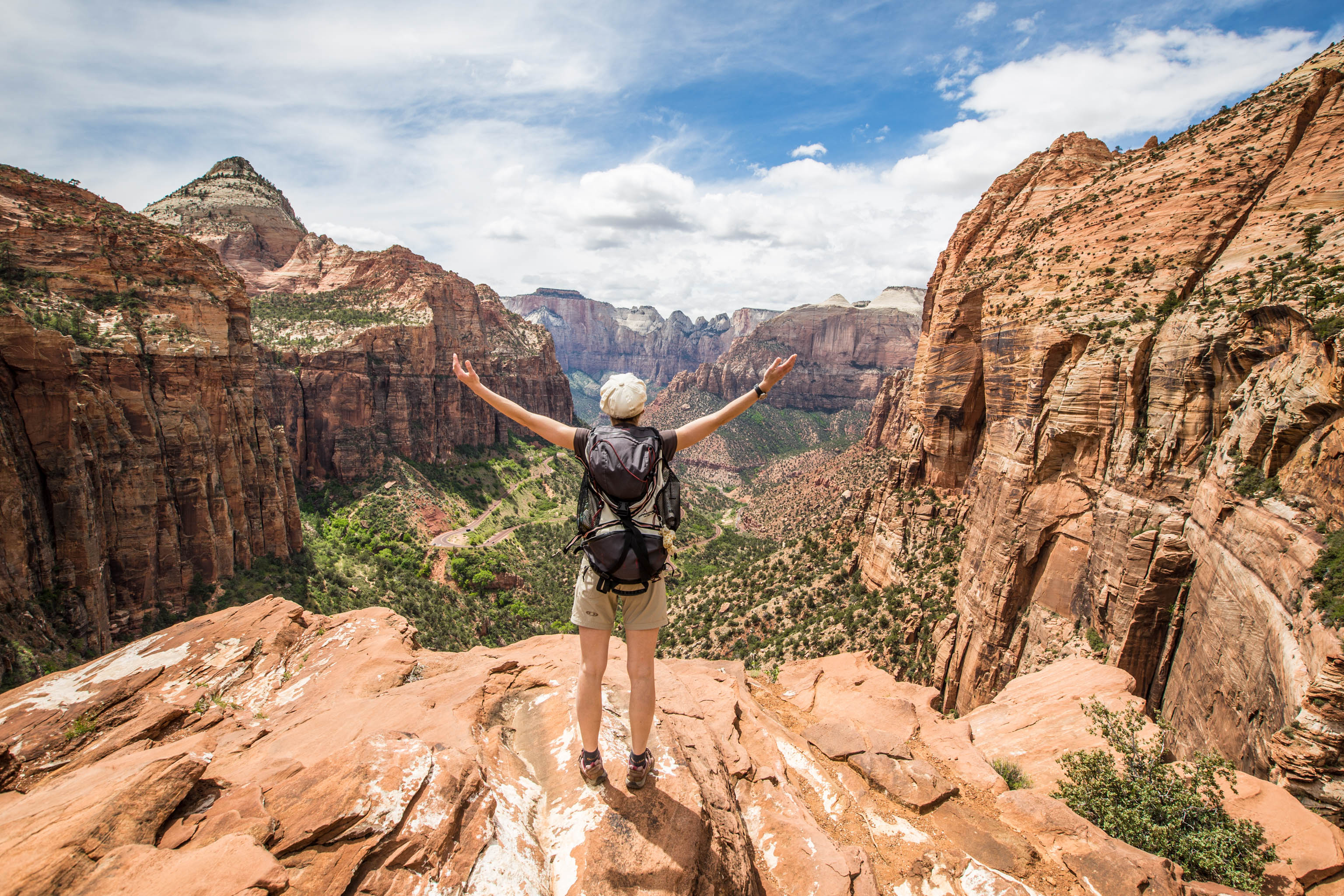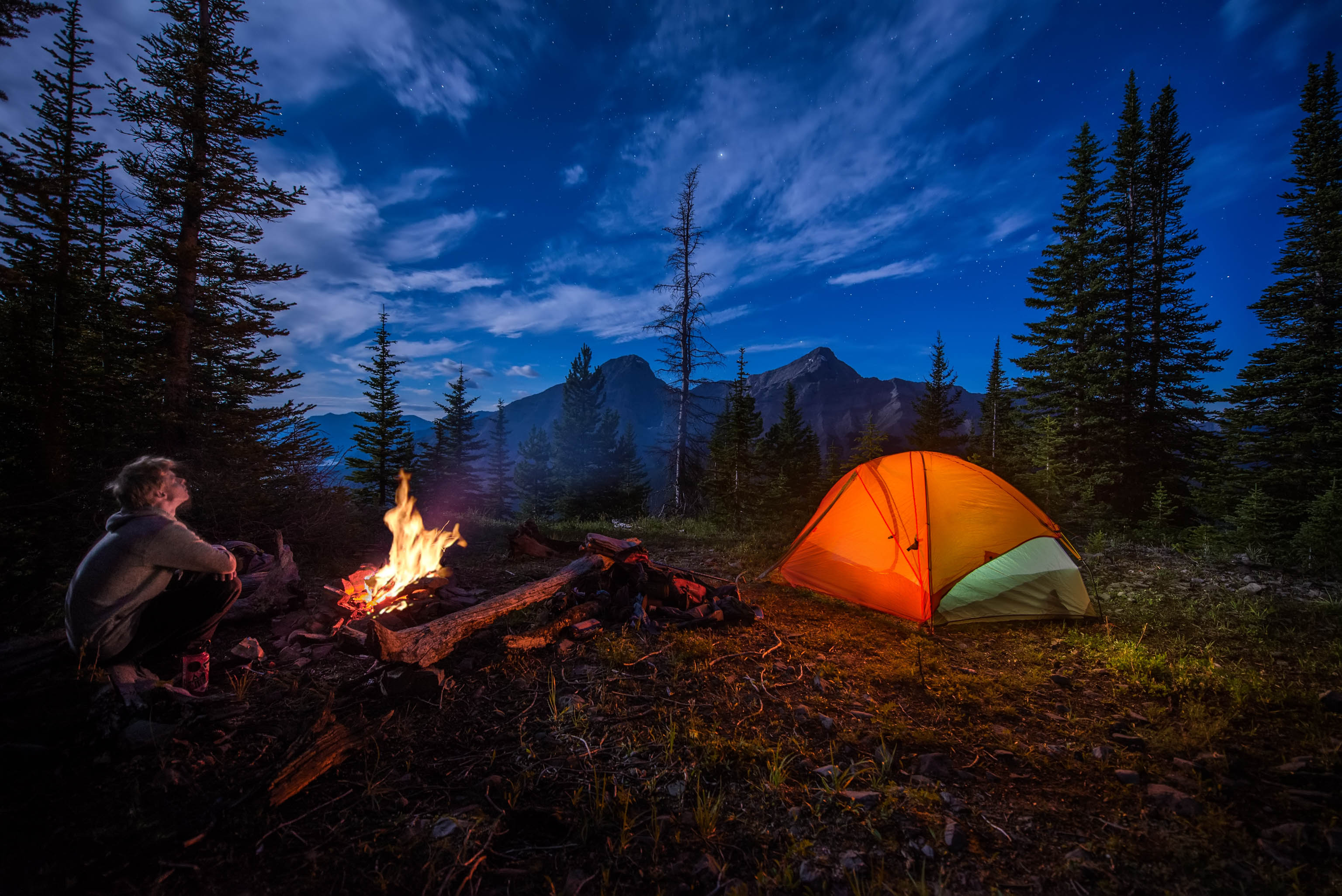Updated on
Anke Müller, has a doctorate in agricultural biology. But the Stuttgart native’s ‘main job’ is as a hiking fanatic. When the 37-year-old goes on a hiking trip, it’s not just for a matter of days, or even weeks – we’re talking about months. She undertakes these XXL trekking trips entirely self-supported, without sponsorship and with the very bare minimum of kit. And in between her long-distance hikes, she keeps her head above water financially by working on assembly lines or at the local market.
Anke’s first big thru hike was the Pacific Crest Trail (USA) in 2016. Since then, she’s racked up countless mammoth hikes: The Greater Patagonian Trail (South America), the Te Araroa Trail in New Zealand, the Continental Divide Trail (USA), the Via Dinarica in Macedonia and Albania, and in summer 2020 she trekked from Göteborg Sweden to the North Cape in Norway.
Now, Anke has just set off on her longest hiking adventure to date. She’s walking from Stuttgart all the way to Nepal. It’s a project that will probably take several years to complete.
“A two-week trekking trip doesn’t count as a long-distance hike to me.”
Further reading on thru hiking:
–> The appeal of long-distance hiking
–> Long-distance walks: 12 classic trails
–> Long-distance hiking trails: 14 insider tips
–> First thru hike – tips from a pro
–> Getting ready for a thru hike
–> 10 stunning thru-hiking facts
Anke, people who drive a lot often cite their annual mileage as an indicator of how much distance they’ve covered. What’s your annual hiking mileage (or in kilometres)?
I guess it must be more than 4,000 kilometres a year. Since completing my first thru hike on the Pacific Crest Trail five years ago, I’ve easily clocked up 20,000 kilometres. But it’s not about how many kilometres I cover. For me, it’s all about the length of time I’m away in one stretch. Sometimes it’s five or six months. A two-week trekking trip doesn’t count as a long-distance hike to me.
Silly question, but why do you hike such great distances?
Mostly it’s about moving… challenging myself, the freedom… achieving goals… definitely the scenery and the natural world… getting dirty sometimes… and there’s always something new to see. And to me, these great distances I cover are similar to a long, flowing river.
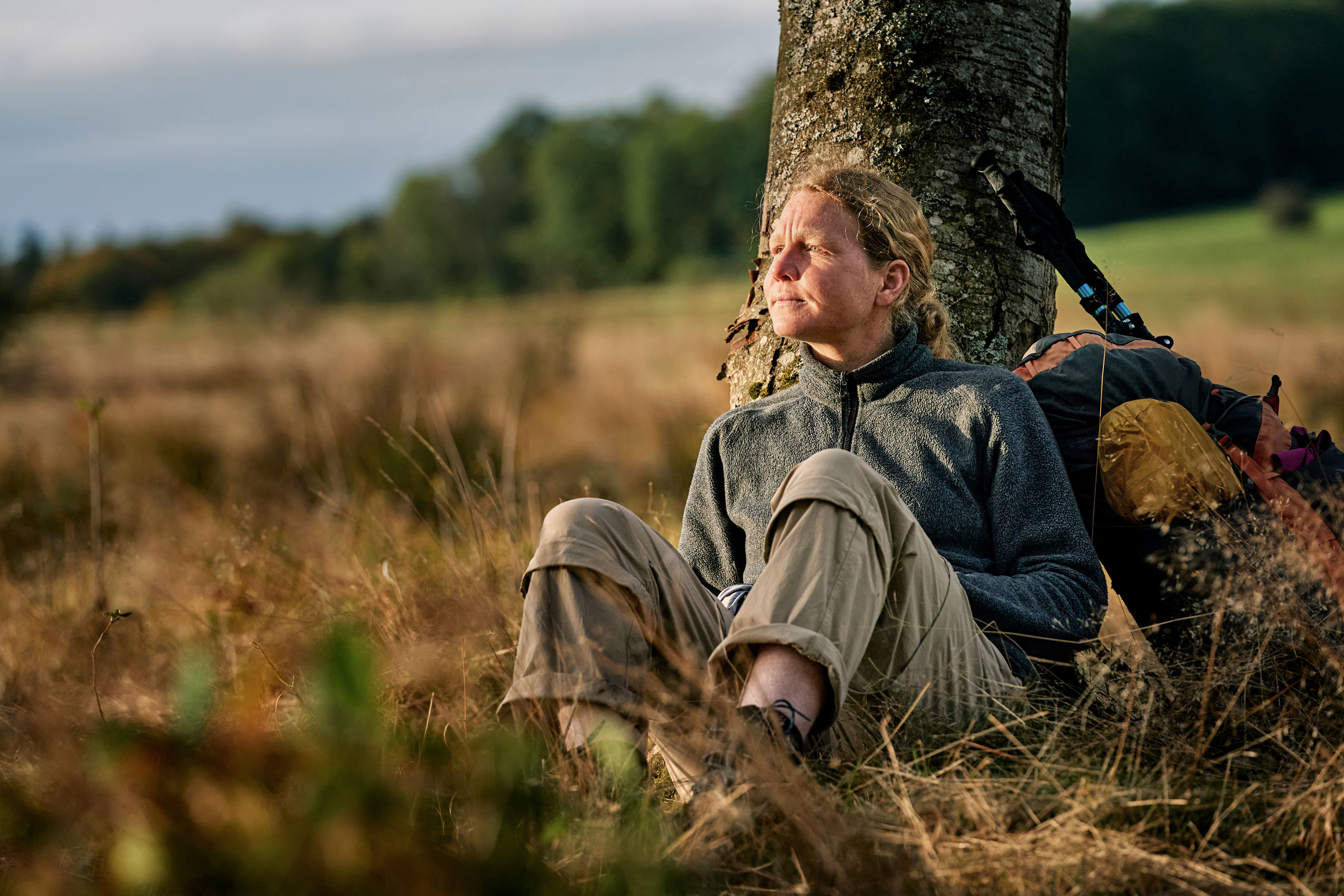
Thru hiking as a way of life
Do you view it as a phase in your life?
Right now, I’d say it’s something I’ll do until my dying days. As long as I’m able to walk, that is. It’s long-term.
How do you manage financially?
I lead a simple life. In between my thru hikes, I work. Mostly it’s jobs helping people out. I’m lucky enough not to have to pay rent for my apartment. I don’t own a car, don’t buy new clothes all the time – I just don’t have the need. And if I ever have to spend a night under a roof instead of in my tent during a hike, then I spend ages googling the cheapest accommodation I can find. To some, that might sound pretty austere. But for me, the freedom it equates to outweighs any hardship.
Couldn’t you earn money doing talks or becoming an outdoor influencer?
It’s tempting to be able to earn money doing what I enjoy. But I’d run the risk of losing my freedom. I can see how it affects others. They have to write their blog etc. and end up having to spend days back in civilization instead of hiking. That’s exactly what I don’t want. That said, I recently got around to sharing my adventures with others. When the mood takes me, I write in my blog about my latest thru hike to the Himalayas.
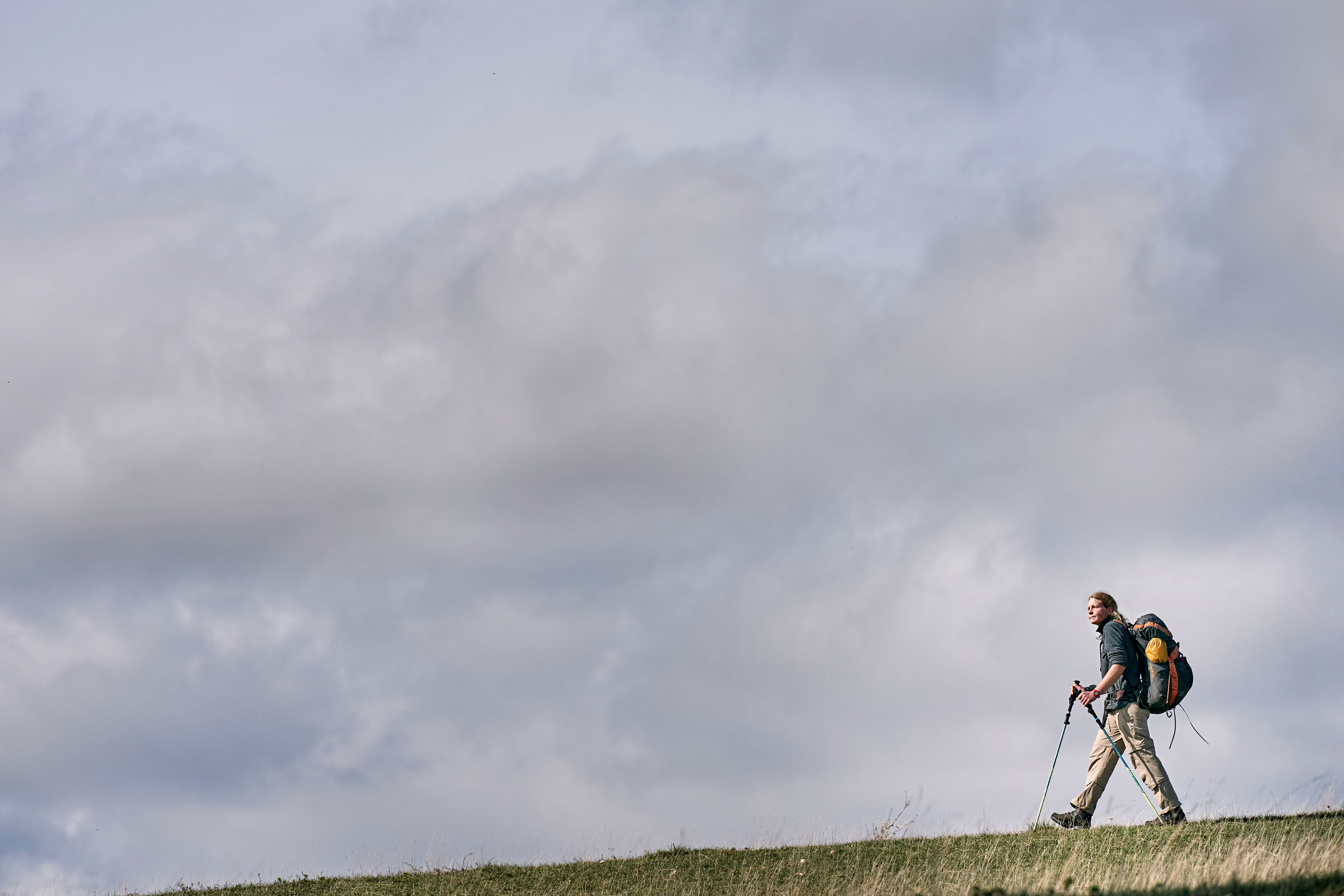
“The freedom to do what I want is a big part of the attraction.”
Are you a loner on your long-distance hikes?
I’ve always enjoyed being on my own. But I’m not a hermit all the time. Spending a year in Alaska, in a little hut on my own – that’s not for me. But when it comes to hiking through nature, then that’s how I prefer it. Even if other people team up for desert sections or high-mountain stages with snow, I still prefer to experience it on my own. On a trek, all around me nothing but wilderness, mountains, lakes, animals – it rouses your sense of discovery.
The freedom to do what I want, go at my own pace, is a big part of the attraction. It probably has something to do with my father being quite dominating. When I’m thru hiking, it’s the exact opposite: enormous freedom.
How do others react to you – as a woman on her own?
Most of them are taken aback: a woman, alone? But when I tell them how it’s definitely more dangerous at Stuttgart’s main train station than it is wandering around in the sticks, they realise then that I’m not scared. It’s not like there’s someone waiting behind a bush for days on end hoping for a woman to walk past on her thru hike.
It helps to have a bit of luck of course, and obliviousness too. But I think we let ourselves get too caught up in social clichés. I don’t exactly pitch my tent somewhere that’s asking for trouble.
“All I wanted to do was sit down and cry.”
A lone person, walking long distances through the wilderness. We’re prone to romanticising long-distance hiking. But is that the reality?
The highs definitely outweigh the lows. No question about it. But of course the sun doesn’t shine every day, or every month, on the trail. Storms, cold, wet gear – they’re all part of it too. And situations that are hopeless.
This one time, I lost my phone on a river crossing. All I wanted to do was sit down and cry. But that doesn’t help. In the end, you can always work things out somehow. It makes you stronger, more self-assured.
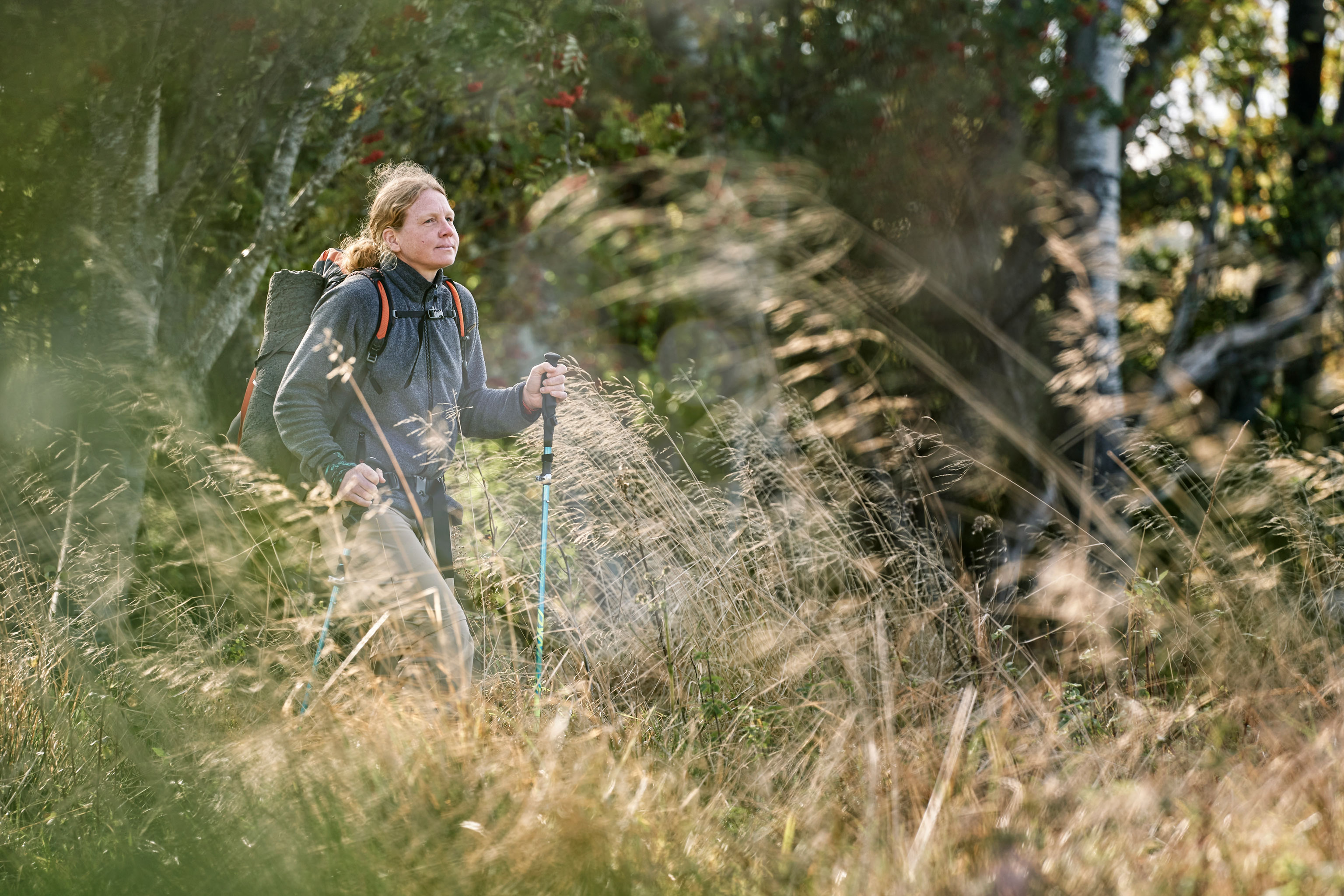
“In that respect, my thru hikes equate to luxury travel.”
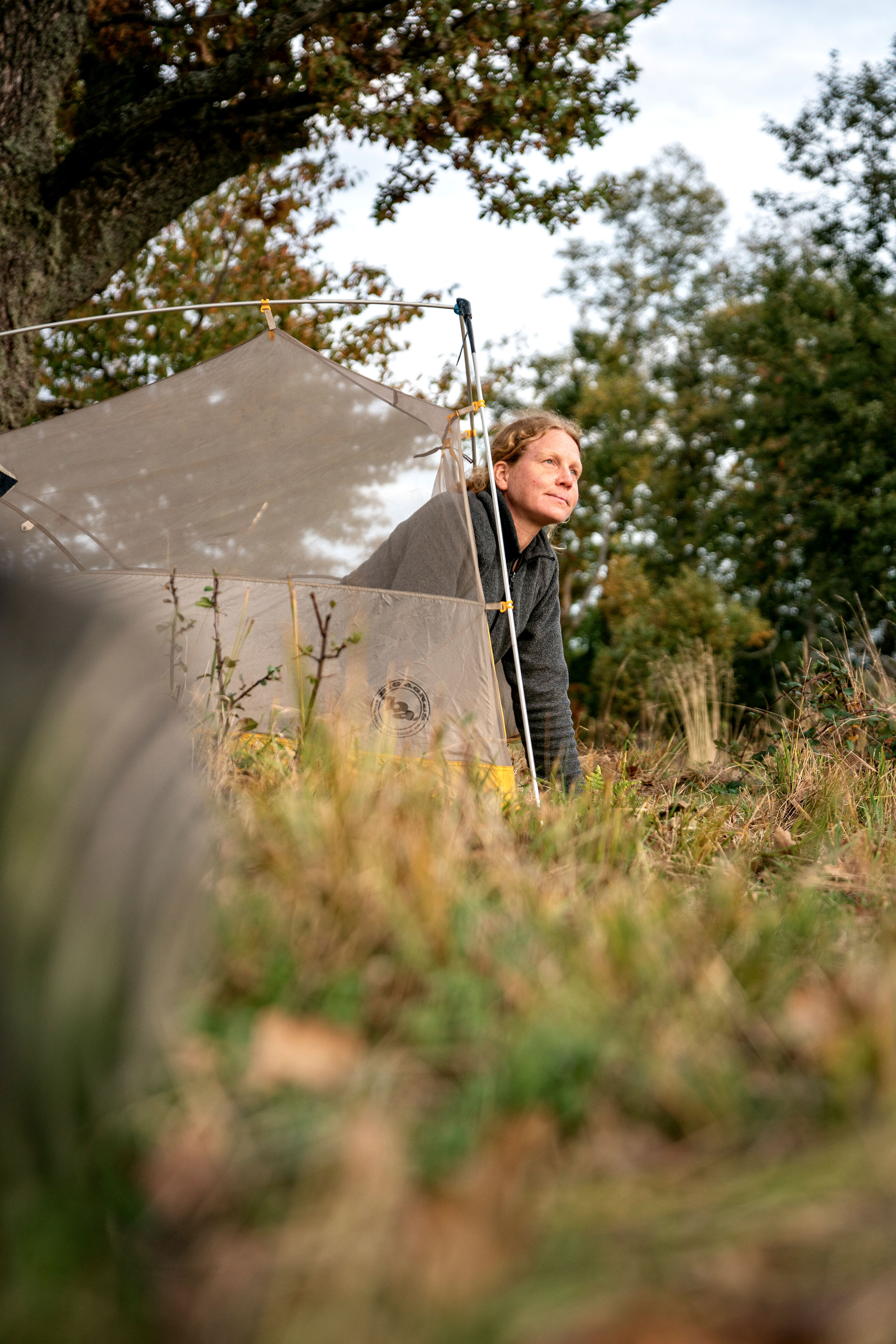
You like to go at your own pace on your extreme trekking trip. How important a role does time play?
Time is such a luxury these days. And in that respect, my thru hikes equate to luxury travel. At times, I drift off into a kind of meditative state. I’m just walking along in an arid landscape, and then suddenly I find myself in a pine forest. It’s like I wake up in a different place, at a different time.
Is that what your moments of happiness look like?
Ah, happiness! Mostly, it’s the little things when I’m on a long hike. A pretty flower. A sunrise. An apple that’s fallen at my feet.
That sounds very simple.
Your priorities change. I’ve always been pretty minimalist. But over time, it’s definitely become more extreme. Especially where my kit is concerned. All I need is the trousers I’m wearing. And besides that, all I have is a pair of waterproof overtrousers.
But there are limits to my minimalism too. I don’t drill a hole in the handle of my toothbrush to shave off a few grams. And I don’t use my socks as gloves either. Some people really do that. When it comes to my backpack, I’ve developed an almost personal relationship with it. I’ve named it Harald. When something breaks on it, I’m sure I feel actual pain.
What luxuries do you allow yourself on your hiking adventures?
Freshly washed laundry, a hot meal, a stove…
A stove? Is that not standard?
For a long time, I never had a stove. It saves time and weight, as well as gas canisters or bottles. But these days I usually take a stove with me.
So what did you used to eat?
Nuts and muesli. Chocolate. And mash – dried potato mash can also be mixed with cold water. It doesn’t taste great, but it’s passable. The same goes for couscous and those instant noodles. But hiking through Sweden and Norway, I was really glad to have a hot meal.
“400 grams of peanuts for desert – but I still lose weight on thru hikes.”
Want to join Anke Müller on her current trek from Germany to the Himalayas? She regularly posts updates and tips on her blog or on Instagram. Her packing list illustrates just how little you actually need for such a big trekking adventure.
Don’t you miss other foods?
Yes, sure. Fruit and vegetables. But larger amounts of those are too heavy to carry on your back. I usually buy two or three carrots and two or three apples. That has to last me about ten days. In general, my long-distance hiking logistics are very much based on where I can next stock up on food. If there’s a 14-day stretch without any shops, then I really have to work out my food rations carefully. Otherwise I’d end up carrying too much. Per day it ends up being about 600 grams. But covering 50 kilometres in a day, that’s too little.
Hunger pangs are definitely commonplace. Sometimes I raid my supplies and polish off 400 grams of nuts in one night. But I still lose an average of five kilos on every thru hike.
What other effects does hiking for so many long days have?
After a while, my footwear doesn’t fit anymore. The long stretches of a thru hike make your feet swell up. It can make a difference of 2 or 3 shoe sizes.
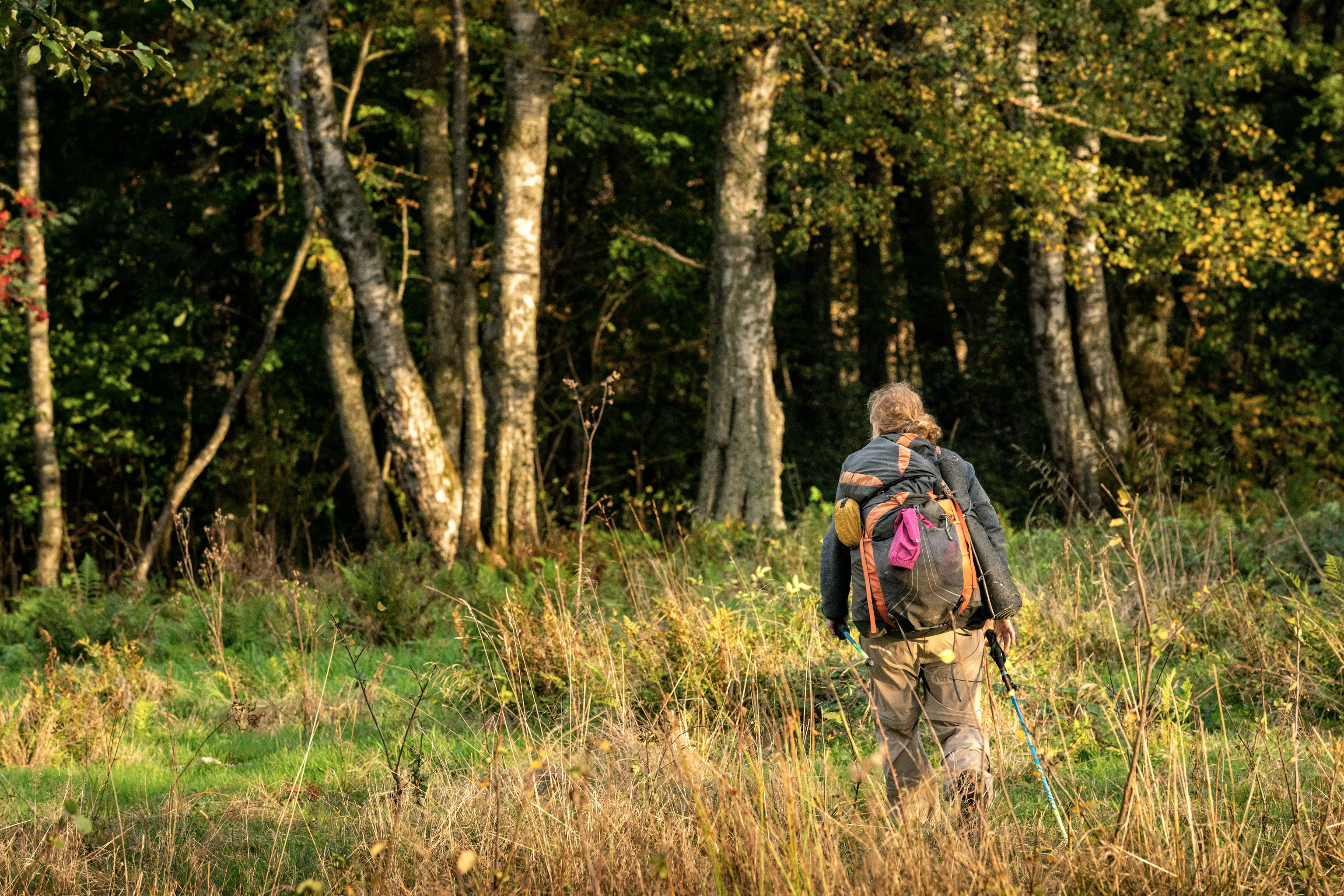
Pure nature – long-distance hikes are wilder and more intense
What are the lasting memories from your long-distance hikes? Is the experience of nature different to what it would be on a shorter trekking trip?
It does make a difference being on the move, far from civilisation, for several days instead of several hours – and the effect is even greater over months. Everything is wilder, more isolated, more intense. It’s not necessarily just a high. It instils a sense of respect. I realise how much I depend upon nature. If it’s just three days, and I’m wet and dirty, it’s no biggie – I know I’ll be able to have a hot shower soon. But on a long trek like this, if my sleeping bag is constantly wet, it can be a real drag.

